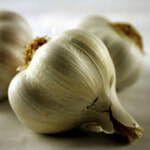Table of Contents
Welcome to Spiritfoods!
The article you’re about to read provides a distillation of the health advice contained within this website. This advice is based on years of independent and objective research, and I believe that those who follow it will experience significant long-term health benefits.
For brevity’s sake, no references to scientific papers are found below. If you’re seeking scientific validation for the conclusions presented herein, please refer to the main articles to which this article regularly links.
With that said, let’s begin with the most important component of the health equation: diet!
Part I: Basic Lifestyle Changes
What Foods Are We Adapted to Eat?
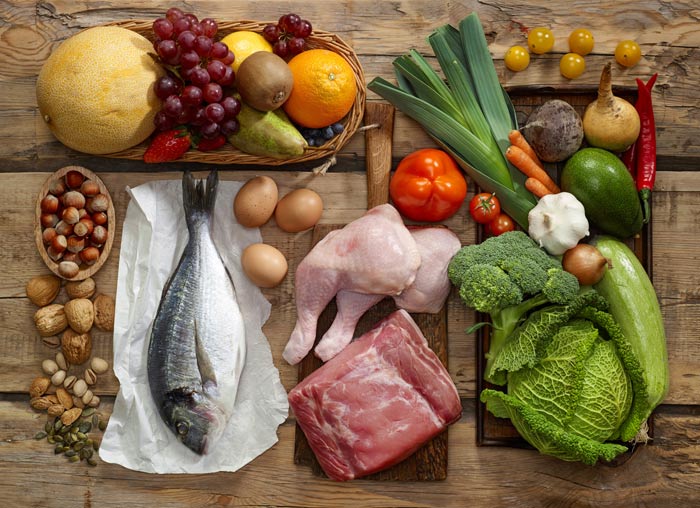
Short answer: these
The reason all of us are alive right now, healthy and without widespread genetic issues, is because our hunter-gatherer ancestors survived for millennia on animal-based foods.
Fish, seafood, eggs, poultry, beef, lamb, pork, organ meats, even insects… we ate them all. In some cases, that’s all we ate. And because of that, our species thrived on this harsh, unforgiving planet.
For this reason, the so-called “paleo” diet is our default diet. People who follow other diets are, in essence, following fad diets.
So, what is this paleo diet to which we should all adhere?
A return to natural, whole foods, of course! But not just any whole foods – whole foods that our bodies have evolved over millennia to consume, namely:
However, the paleo diet does not permit:
Our bodies are not fully adapted to process grains, legumes and pasteurized dairy products. The various anti-nutrients in grains and legumes, for instance, and the whey and casein in dairy, can cause us numerous health problems. Gluten-containing grains are especially destructive to the health of our digestive tract, and – as a free bonus – also send our blood sugar levels through the roof.
Hence, none of these food groups are recommended by most paleo researchers, myself included.
Did you know?
While eating a paleo-based diet can do wonders for our health, our efforts can be sabotaged if we cook our food using commercial vegetable oils, such as sunflower, corn, canola and cottonseed oil. Aside from being packed with omega-6 fatty acids, which most Westerners already consume in excess, these oils are usually processed using harmful chemicals that can compromise cardiovascular and neurological function.
Instead, consider cooking with healthier oils, such as raw coconut oil, extra virgin olive oil or unprocessed palm oil. Better still, go 100% primal and cook the food using good ol’ fashioned animal products, such as lard, tallow or ghee. All of these products are rich in good fats and tolerate high temperatures, making them stable and nutritious cooking aids.

He might be smiling, but his heart isn’t
The Importance of Food Sensitivity Testing
While the paleo diet is suitable for everyone, some foods it permits might be unsuitable for certain people. Conversely, some people might be able to handle (and benefit from) foods that the paleo diet doesn’t recommend.
For example, some people are able to derive enormous benefit from raw milk… but eating a single tree nut can hospitalize them.
EnteroLab and Cyrex Laboratories provide accurate and detailed food sensitivity reports. They’re not cheap, but the results they present will last a lifetime.
Organic and Pasture-Raised Is Best
Organic food is much healthier and safer to consume than non-organic food.
Aside from being free from pesticides and other harmful chemicals, organic food tends to be grown in soil that is not subjected to the aggressive tilling techniques that characterize non-organic agriculture. This results in land that is less susceptible to erosion, and fruit and vegetables that are richer in minerals.
When it comes to meat, though, I never compromise: Meat should be purchased from organic-certified farms whose animals are pasture-raised. Ruminants allowed to consume their natural grass-based diets in outdoor environments produce meat that is much healthier, and far less contaminated, than their conventionally-raised counterparts. Moreover, the animals tend to be far more humanely treated.

Outdoor animals are happy animals
Recommended Nutrient Supplements
If you follow an organic, paleo-based diet, I doubt you’ll need to take supplements to avoid nutrient deficiencies. Cooked cow’s liver, for instance, supplies our bodies with far more bio-available vitamins and minerals than commercial multivitamins.
That said, there are three whole food supplements out there that almost everyone will benefit from taking daily, namely, Moringa oleifera, kelp and fish oil.
Water
Water comprises approximately 90% of the human brain and 75% of the overall body. It is involved in numerous essential biological functions, including cell life, metabolic and chemical reactions, nutrient transportation, temperature regulation and waste elimination. Thus, getting enough water is kinda important.
But what type of water is the healthiest to drink?
Well, that’s an easy one. The healthiest water to drink is, of course, mineral water from natural springs and wells.

Natural, unpolluted water: you can’t beat it
But of course, most people don’t have access to springs and wells, so let’s adjust the question a little:
What type of water, which is available for almost everyone, is the healthiest to drink?
You’re going to find a lot of conflicting information on this topic, and a lot of it is fueled by financial interests.
As a general rule, you want water that comes as close to pure mineral water as possible. Unfortunately, most of the devices that remove most impurities from tap water, such as water distillers and reverse osmosis systems, also remove the minerals from the water too. This results in a dead, lifeless liquid that resembles pure air in taste, and long-term consumption of it can lead to minor health issues.
Therefore, here’s my recommendation: Filter your tap water via distillation or reverse osmosis, then re-mineralize it with a sprinkle of Himalayan crystal salt or unrefined sea salt. Now you’ll have the best of both worlds: a mineral-rich water that is free from sodium fluoride, hormone residues and other undesirable contaminants.
Interested in reading more about the “liquid of life”? Check out the main article about it here, which includes guidelines on how much of it we need to drink to remain healthy.
Exercise
Our approach to exercise should mirror our approach to diet: What are our bodies adapted for?
So, outdoor walking – where the surfaces and inclines are forever changing – is a great “maintenance” exercise that accords with our physiological evolution. The same is also true of gentle lifting, gardening, cleaning, sex and other exercises that require varied but non-strenuous movement.
Then, of course, there were the infrequent moments when our ancestors needed to exert themselves. These moments were usually limited to times when a toothy predator jumped out of the bushes and started to chase us around, prompting an instinctive flight response. Consequently, our bodies became enormously well-adapted to brief periods of high exertion.
With HIIT, we alternate between short periods of intense anaerobic exercise and (usually longer) periods of non-intense “recovery” exercise. For example, running as fast as possible for 30 seconds, then jogging or walking for 1-2 minutes until our heartbeat recovers, then running for another 30 seconds is an example of HIIT in action.
There are several benefits to HIIT when compared with regular, sustained cardiovascular exercise (such as jogging for 45 minutes, or spending an hour on the exercise bike).
Firstly, HIIT is proven to be more effective for fat burning and improving cardiovascular health than regular cardio. Secondly, HIIT tends to produce far less cortisol (a stress hormone that our bodies release during exercise) than regular cardio, since HIIT sessions seldom last longer than 20 minutes while regular cardio sessions can often exceed an hour. Cortisol eats through both fat and muscle… and remember, the heart is a muscle.

Cortisol destroys muscle as well as fat, which is why so many endurance athletes end up looking like… this
Read the main article on high-intensity interval training here.
Natural Remedies
First, let me concede that I am not 100% against modern medicine. If you end up losing an arm during a freak encounter with a disobedient chainsaw, you need a surgeon – not a dock leaf. Likewise, a woman suffering from extreme childbirth pain will probably be far more grateful to the physician who administers intravenous morphine than the naturopath who gives her white willow capsules.
So, what are our options?
Firstly, we follow the dietary advice listed above. Simply improving our diet and avoiding the foods that our bodies cannot handle is well over half the battle… especially if we lose a lot of excess weight in the process.
Once our diet-related problems are recognized and addressed, most non-serious medical conditions – on the rare occasions when they arise – can usually be treated with natural remedies. Ginger root, for example, is effective at treating morning sickness and stomach aches. Black walnut hull extract is excellent for killing intestinal parasites. A sudden bout of indigestion? I can’t think of a better solution than a teaspoon of baking soda mixed with water.
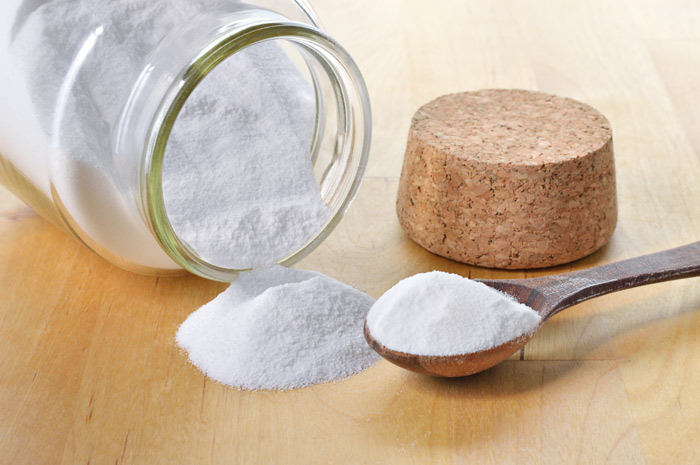
Baking soda: the second greatest thing in the world after coconut oil
The idea is to detach yourself from modern medicine as far as possible, first by improving your diet and then by treating future, non-serious conditions through natural means. It is a long and slow process, and you will feel like giving up from time to time… especially in the beginning.
But it is worth it.
Part II: Additional Health-Boosting Techniques
Now that we’ve covered the basics, let’s take a look at other, less conventional techniques that can take our health to the next level. Please note that I don’t include any techniques in this section with which I don’t have direct, personal experience.
Oil Pulling
Oil pulling is the ancient Ayurvedic practice of swishing an antibacterial oil around the mouth for between 15-20 minutes, preferably first thing in the morning, to kill harmful oral bacteria.
The practitioner, in essence, uses the oil as a natural mouthwash.
Since all degenerative and infectious diseases start in the mouth, the benefits of oil pulling cannot be understated. Increased stamina and immunity, clearer skin and eyes, relief from inflammatory conditions, whiter teeth, weight loss… there doesn’t seem to be a single condition that oil pulling can’t at least improve.
Interested in oil pulling? Read the main article about it here, which includes guidelines on how to do it properly.
Improved Tooth Cleaning
I don’t have too much to say about tooth cleaning, since a paleo-based diet, which avoids grains and sugar, is a natural guard against decay. That said, stainless steel dental tools are highly effective (much more so than dental floss) at removing the plaque and tartar that accumulates behind the lower central incisors.
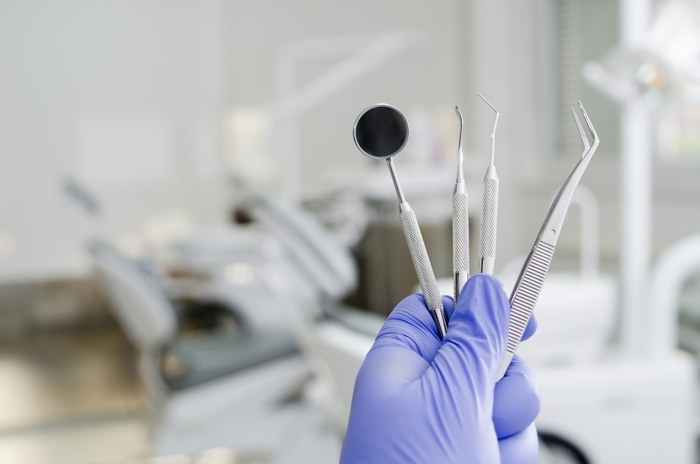
Seriously, buy some. A pack costs about $10 and they will last you forever
Squatting to Poop
Despite being a marvel of modern engineering, the modern toilet isn’t ideal for a superior poop. The sad truth is that sitting on the porcelain throne places enormous stress on our lower rectum, since downward pushing of the diaphragm causes our veins to swell and stretch. This results in an incomplete elimination at best, and irritable bowel syndrome (IBS), hemorrhoids and other bowel-related issues at worst.
So, does this mean that we should start pooping in the woods like the average PETA employee? No, of course not. There are several solutions to The Pooping Question, and none of them require us to replace our Western toilets with unattractive squat toilets.
Firstly, if you weigh less than around 150 pounds (68 kg), then you have the option of squatting while balancing on the toilet rim. It might sound unsafe and ridiculous, but toilets are designed to accommodate an adult’s entire body weight… so if you can do it, why not?
Otherwise, you could invest in a Squatty Potty, which is an inexpensive toilet stool that allows us to mimic our natural squatting position. This is probably the best solution for heavier adults or people with mobility issues.
And don’t worry… you can hide it when guests come over.
Colonic Irrigation
I promise that this is the last poop-related suggestion on the list. You know I wouldn’t include it if it weren’t important.
Colonic irrigation, also called colon cleansing or colon hydrotherapy, is a treatment in which large volumes of warm water are repeatedly inserted into (and removed from) the patient’s colon to cleanse it of accumulated waste. Unlike enemas, which can be performed by anyone with an over-the-counter kit, colonic irrigations are performed by trained professionals using modern and precise equipment, and the risks associated with them are minimal.
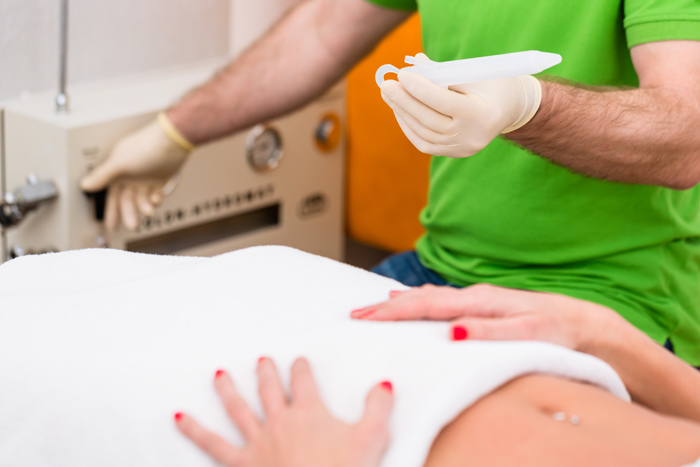
Colonic irrigation: It looks and sounds worse than it actually is
In 2011, I underwent a series of 10 colonics and, to this day, I consider it the best non-dietary health decision I’ve ever made. Approximately seven pounds of waste was removed from my body, my skin cleared up and the regularity of my bowels improved tenfold… and I’m a young health freak. Imagine what beneficial changes just one colonic could make to an older person whose body has suffered a lifetime of neglect!
Dry Brushing
Since approximately one-third of toxins are excreted through our skin, it’s important that we regularly exfoliate it to avoid an overload. Unfortunately, many people’s idea of exfoliating the skin means lathering it with an overpriced gel whose ingredients are even harder to pronounce than the names of Icelandic volcanoes.

Just when you think that volcanoes can’t be more intimidating, this one decides to call himself Eyjafjallajökull
Instead, consider dry brushing!
Dry brushing is the simplest and cheapest way to exfoliate the skin, and it has been around for centuries. To do it, gently brush every part of your body (excluding your face) using a high-quality, long-handed, soft-bristled brush. Most people start brushing at their feet and end with their neck. Always brush towards your heart, since this is best for blood circulation and lymphatic health, and favor sweeping motions at all times.
Dry brushing sessions usually last between 2 and 20 minutes, and typically occur twice a day: once in the morning, ideally before showering, then later in the evening. Over time, you can expect numerous health benefits, including improved lymphatic and kidney function, clearer skin and reduced cellulite, and more efficient digestion.
Washing the Face Before Bed
I know, I know. The last thing a sleepy person wants to do before going to bed is splash their face with water, rejuvenating it anew. But, alas, the results are in: washing the face at night, ideally before sleep, lessens the amount of oil on the skin and increases the nighttime reparation process, leading to accelerated cell metabolism.
Just remember to wash your face with lukewarm water when possible. Repeatedly exposing your skin to extremes of temperature (i.e., ice cold or boiling hot water) can contribute to excess dryness, irritation and, in the worst cases, blood vessel ruptures. Not good.
Sunshine Exposure
Ever noticed that when the sun comes out, a lot of animals – including humans – instinctively bathe in it? That’s not a coincidence. All of us understand on a primal level that the The Giver of All Life on Earth is something to be embraced, not shunned – and real science acknowledges it.

Cats instinctively know that sunbathing is healthy
Indeed, regular exposure to the sun’s ultraviolet (UV) rays has been linked to an improved mood, regulation of body temperature, reduction of blood pressure and total cholesterol, increased serum oxygen levels, purification of blood vessels and, of course, synthesis of the essential, immunity-boosting vitamin D. Some of these benefits, such as an improved mood, can be felt immediately.
If you’re likely to spend a long time in the sunshine, consider purchasing sunscreens that use natural, UV blocking ingredients, such as aloe vera gel and coconut oil, to protect your skin from burning. If you’re feeling especially hardcore, simply lather on raw coconut oil – it contains a sun protection factor (SPF) of 10, meaning it blocks an impressive 90% of the sun’s rays.
Check out the main article about coconut oil here!
Heavy Metal Detoxification
Thanks to ongoing industrialization, our world is becoming increasingly polluted. The air we breathe, the water we drink and the food we eat are all contaminated to some degree by heavy metals… and those heavy metals don’t think twice about entering our bodies and raising hell. In fact, heavy metal toxicity is linked to some seriously unpleasant neurodegenerative diseases, such as Alzheimer’s and Parkinson’s, so the severity of this issue cannot be understated.
Thankfully, nature provides us with a small number of natural heavy metal chelators – whole foods that are proven to remove toxic heavy metals from the body in a safe and unobtrusive manner.
The best-known and least aggressive of these chelators is the herb cilantro, also called coriander or Chinese parsley. To use cilantro for its chelating properties, consume a quarter cup of its stems and leaves daily. After two weeks have passed (which is enough time to ensure the initial heavy metal deposits are cleared), feel free to increase the amount consumed.
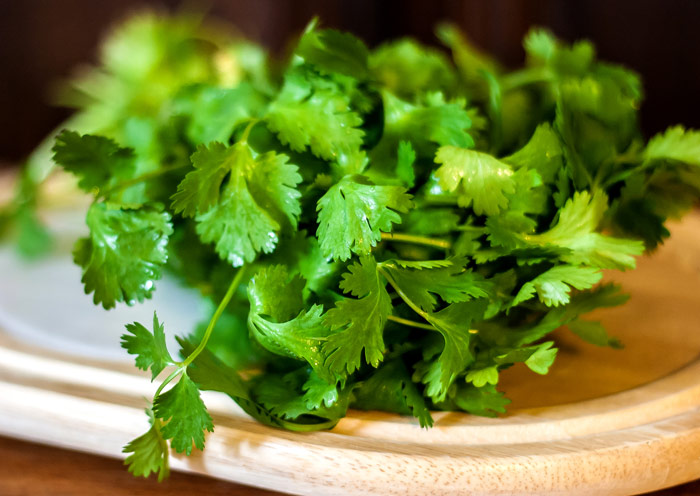
Cilantro: more than just a flavorsome garnish
Alternatively, try chlorella. Chlorella is a single-celled green algae that grows in freshwater bodies, and is a much more potent chelating agent than cilantro. However, its aggressiveness does take some getting used to, since the detoxing symptoms it produces (headaches, constipation, etc.) can be severe. Therefore, I recommend that most people stick to cilantro unless they really know what they’re doing.
Safer Cookware
While nonstick pans are lightweight and convenient, they emit toxic particles and gases into our food and atmosphere when overheated. Indeed, the reason why nonstick pans are nonstick in the first place is because their surfaces are coated with man-made chemicals (most famously Teflon) whose long-term effects on human health should be filed under “unknown, but obviously bad.”
Generally speaking, cookware made from ceramics, cast iron and stainless steel are all good choices. Ceramic cookware tends to be the most universally praised, while cast iron cookware is a little more divisive (some people swear that the iron leeches into the food, though I’ve seen no evidence of this happening). Glassware like Pyrex is non-toxic, too, though it can shatter if its temperature changes too quickly.
Organic Clothing
Like modern cookware, modern clothing is packed with man-made chemicals. In fact, over 8,000 chemicals are used in the manufacturing of clothing made from synthetic fibers, such as acrylic, polyester, nylon, spandex, lycra and rayon. All of these chemicals are absorbed through the skin via osmosis, whereupon they can directly enter our bloodstream and add to our toxic load.
The result? Widespread chemical-related medical problems across the West, including muscle fatigue, hormone disruption, headaches, skin problems, respiratory issues and, in extreme cases, infertility. Moreover, since synthetic fibers restrict and suffocate our skin, our body has problems releasing the toxins causing these problems in the first place, compounding their damage.

I won’t even get into the environmental damage that synthetic clothing production causes, because frankly… it’s too depressing
Therefore, I believe that all individuals seeking good health should, at some point in their lives, switch from synthetic clothing to clothing that uses natural fibers, such as organic cotton, hemp or linen. I’ve had good experiences in the past with Rawganique, a Canadian organic clothing company that ships worldwide. Moreover, the US-based Lana’s Llama provides especially high quality (100% natural) organic clothing at a higher price.
Ergonomic Equipment
No health article is complete, of course, without addressing the problems associated with the modern curse that is extended computer usage.
Let me start by stating that nothing good can come from staring at a computer screen for hours at a time. We can’t magically transform this unhealthy activity into a healthy one. What we can do, however, is reduce the strain it places on our vision and wrists by making simple changes.
Firstly, I recommend downloading the free software program Flux. Flux automatically adapts the color of the computer display to the time of day (so the screen color is clear by day and warm by night), preventing eye strain. Taking breaks from the computer every 30 minutes or so can also reduce blurriness linked with prolonged screen gazing.
Secondly, invest in ergonomic equipment. The standard keyboards and mice that come with most computers are a recipe for repetitive strain injury (RSI), and believe me, you don’t want RSI.

If your mouse still looks like the type that people were using in 1995, you’re doing it wrong
I recommend the Microsoft Natural Ergonomic Keyboard 4000 combined with the Logitech M570 Wireless Trackball Mouse and Belkin WaveRest Gel Mouse Pad. I’ve been using this combination for years and I suffer from no wrist-related problems, despite working as a writer.




